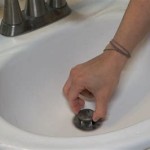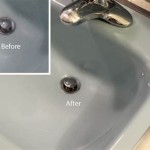Molino Para Sink De Cocina: A Comprehensive Guide
A "molino para sink de cocina" translates from Spanish to "sink grinder for kitchen" or, more commonly in English, a garbage disposal. This appliance, installed under the kitchen sink, grinds food waste into small particles that can be flushed down the drain. It offers a convenient and hygienic way to manage kitchen waste, reducing reliance on trash cans and minimizing odors.
Garbage disposals operate using a powerful motor that rotates a series of impellers. These impellers force food waste against a stationary grinding ring, effectively pulverizing it. Water is essential to the operation of a garbage disposal, flushing the ground particles down the drain and keeping the grinding components cool. Without sufficient water flow, the motor could overheat, and the ground food waste could clog the drain.
Several types of garbage disposals are available, each designed for specific needs and budgets. Continuous feed disposals are the most common type, allowing users to grind food waste continuously while the motor runs. Batch feed disposals, on the other hand, require the user to load the chamber, close a cover, and then activate the grinding process. Batch feed disposals are generally considered safer, especially in households with children.
Garbage disposals are further categorized by horsepower, typically ranging from 1/3 HP to 1 HP. Higher horsepower models can handle larger volumes of food waste and tougher materials like small bones. The choice of horsepower depends on household size, cooking habits, and budget. Larger households that generate significant amounts of food waste might benefit from a higher horsepower model.
Installation of a garbage disposal requires basic plumbing knowledge and the appropriate tools. The process involves connecting the unit to the sink drain and the dishwasher discharge tube (if applicable). It is crucial to ensure a tight seal between the disposal and the sink flange to prevent leaks. If unsure about the installation process, consulting a qualified plumber is recommended.
Proper maintenance is essential for the longevity and efficient operation of a garbage disposal. Regular cleaning can prevent unpleasant odors and buildup of food particles. Running cold water during and after grinding helps flush debris down the drain. Avoid grinding fibrous materials like celery stalks, corn husks, and artichoke leaves, as these can wrap around the impellers and cause jams. Grease and oil should also be avoided, as they can solidify in the drain and lead to clogs.
Certain materials should never be put down a garbage disposal, including large bones, expandable foods like pasta and rice, and non-food items like plastic, metal, and glass. These materials can damage the grinding components or create blockages in the plumbing system. Coffee grounds, while biodegradable, can accumulate and create a thick sludge that can clog the drain. Eggshells are generally considered acceptable, but their membranes can wrap around the impellers, so it's advisable to grind them sparingly.
Choosing the right garbage disposal involves considering several factors. These include household size, cooking habits, budget, and the desired level of noise reduction. Some models feature sound insulation technology to minimize operational noise. Reading online reviews and comparing different models can assist in making an informed decision.
Addressing common garbage disposal problems often involves simple troubleshooting steps. If the disposal hums but doesn't grind, it might be jammed. Most disposals come with a reset button and an Allen wrench for manually clearing jams. If the disposal doesn't turn on at all, checking the power supply and the reset button is the first step. Persistent problems should be addressed by a qualified plumber.
The benefits of owning a garbage disposal extend beyond convenience. By diverting food waste from landfills, garbage disposals can contribute to reducing greenhouse gas emissions. The ground food particles can be processed at wastewater treatment plants to produce biogas, a renewable energy source. Furthermore, reducing reliance on trash bags contributes to environmental conservation.
Modern garbage disposals incorporate advanced features to enhance performance and convenience. Some models feature automatic reversing technology to prevent jams. Others offer multiple grind stages for finer pulverization. Stainless steel grinding components offer enhanced durability and corrosion resistance. Choosing a model with appropriate features can significantly improve the user experience.
Consideration of local regulations is essential when installing a garbage disposal. Some municipalities have restrictions on garbage disposal usage due to concerns about wastewater treatment capacity. Checking with local authorities before purchasing and installing a garbage disposal is advisable.
Investing in a high-quality garbage disposal can provide years of reliable service and contribute to a more efficient and hygienic kitchen environment. By understanding the different types of disposals available, proper usage, and maintenance procedures, users can maximize the benefits of this valuable kitchen appliance.

Insinkerator Badger 500 Standard Series 1 2 Hp Continuous Feed Garbage Disposal The Home

Como Instalar Triturador De Cocina Paso A

Disposal Molino O Triturador Para Cosina Todo El Proceso De Instalacon Youtube

Hikingsz Foryoupa Newchallenge Viral Foryou Parati Perfectasiam Fypシ

Como Instalar Un Triturador De Comida Paso A Garbage Disposal Installation

Como Instalar Sink Garbage Disposal Paso A Facil Y Rapido How To Replace Youtube

Molino Giratorio De Alimentos Acero Inoxidable Mercadolibre

Quem Nunca Precisou Chamar O Encanador Para Desentupir Ralo Da Pia Com Triturador De Residuos Você Não Precisa Mais Se Preocupar Isso Pois Os Orgânicos Agora Podem Ser Descartados

Cieloblue Sxc 22 Molino De Carne Embutidor 1 Hp Seminuevo Smx 2 Inmeza

Reemplazar Un Garbage Disposal Triturador De Basura Youtube







